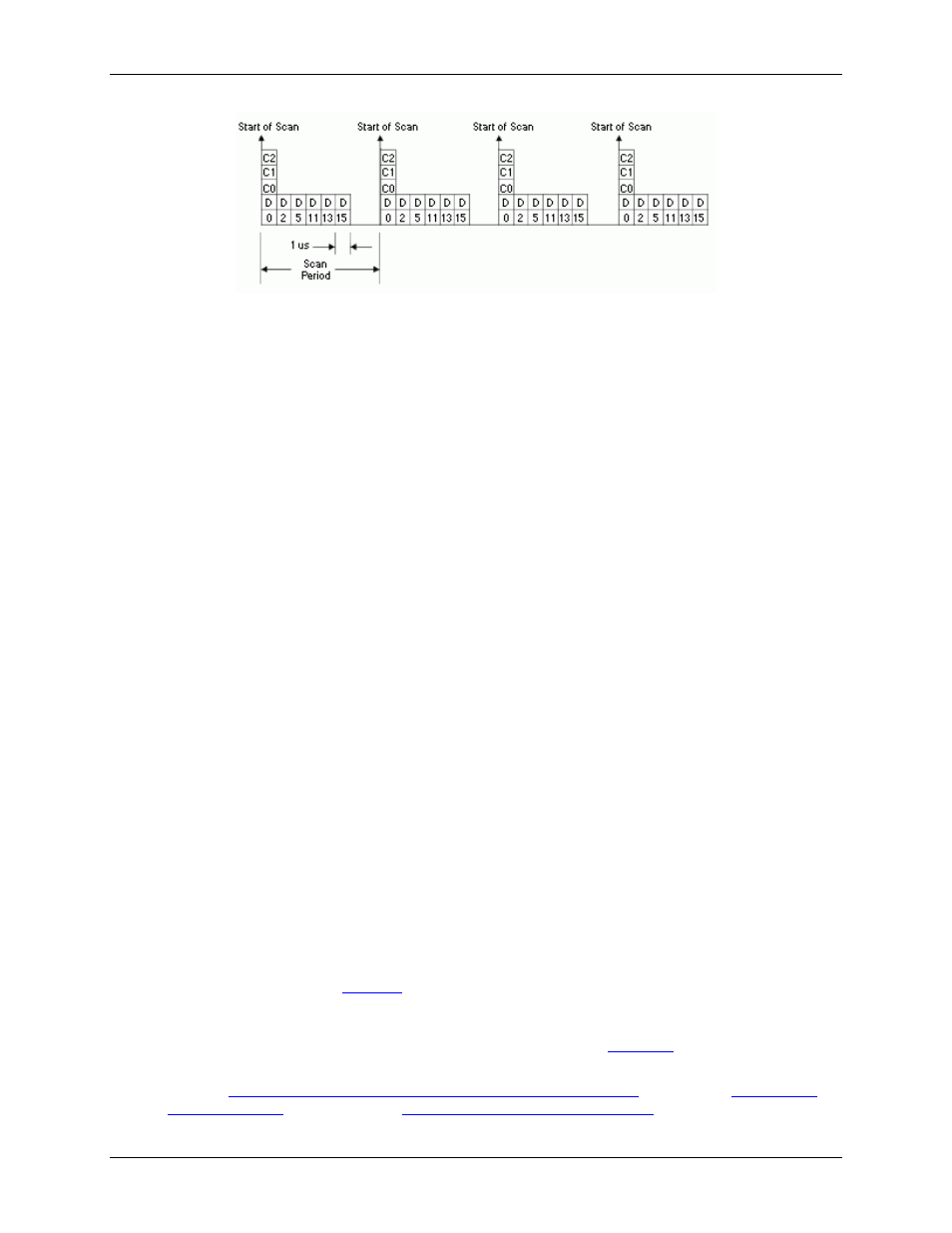Thermocouple input, Tips for making accurate temperature measurements – Measurement Computing USB-2527 User Manual
Page 28

USB-2527 User's Guide
Functional Details
28
Figure 11. Analog and digital scanning, once per scan mode example
If the three counter channels are all returning 32-bit values and the digital input channel is returning a 1-bit
value, then 18 samples are returned to the PC every scan period, with each sample being 16-bits. Each 32-bit
counter channel is divided into two 16-bit samples—one for the low word and the other for the high word. If the
maximum scan frequency is 166,666 Hz, then the data bandwidth streaming into the PC is 3 MS/s. Some slower
PCs may have a problem with data bandwidths greater than 6 MS/s.
The USB-2527 has an onboard 1 MS buffer for acquired data.
Thermocouple input
You can configure up to four analog inputs on the USB-2527 to accept a TC input. Built-in cold-junction
sensors are provided for each of the screw-terminal connectors, and any TC type can be attached to any of the
four thermocouple channels.
When measuring TCs, the USB-2527 can operate in an averaging mode, taking multiple readings on each
channel, applying digital filtering and cold-junction compensation, and then converting the readings to
temperature.
As a result, the USB-2527 measures channels with TCs attached at a rate from 50 Hz to 10 kHz, depending on
how much over-sampling is selected.
Additionally, a rejection frequency can be specified in which over sampling occurs during one cycle of either
50 Hz or 60 Hz, providing a high level of 50 Hz or 60 Hz rejection.
Tips for making accurate temperature measurements
Use as much oversampling as possible.
Warm up the USB-2527 for 60 minutes—including TC wires—so that it is thermally stabilized. This
warm-up time enables the CJC thermistors to more accurately measure the junction at the terminal block.
Make sure the surrounding environment is thermally stabilized and ideally around 20 °C to 30 °C. If the
board’s ambient temperature is changing due to a local heating or cooling source, then the TC junction
temperature may be changing and the CJC thermistor will have a larger error.
Use small-diameter, instrument-grade TC wire. Small diameter TC wire has less effect on the TC junction
at the terminal block because less heat is transferred from the ambient environment to the junction.
Use shielded TC wire (see "
" on page 29) with the shield connected to analog common to reduce
noise. The USB-2527 has several analog common pins on both the 68-pin connector and the 40-pin
connectors, and the TB-7 has one analog common screw terminal.
You can also minimize the effect of noise by averaging readings (see "
" on page 29), or
combining both shielding and averaging.
Refer to "
68-pin SCSI connector differential and single-ended pin outs (P5)
Four-channel TC terminal pin out (TB7)
" on page 19 for the locations
of these analog common pins.